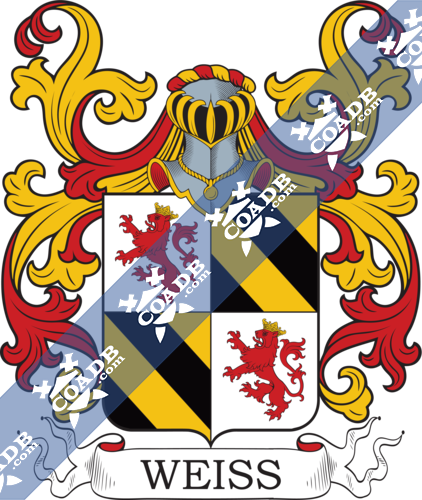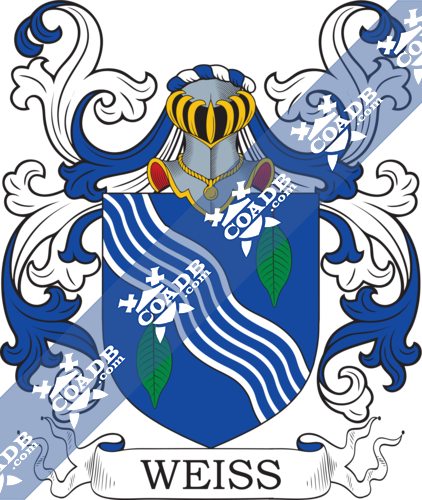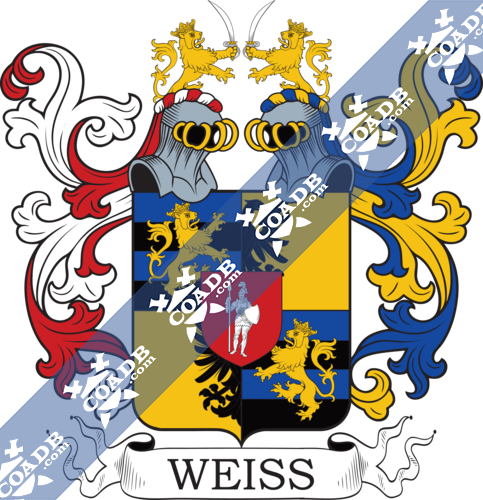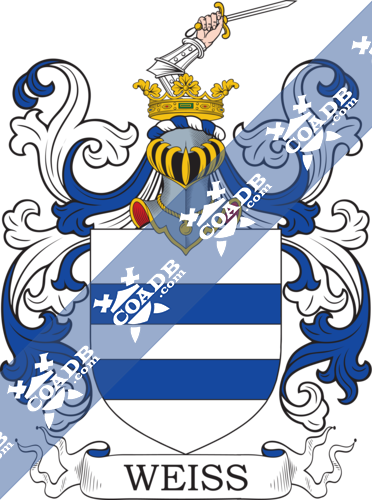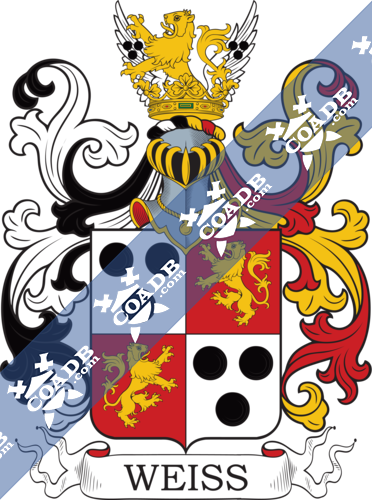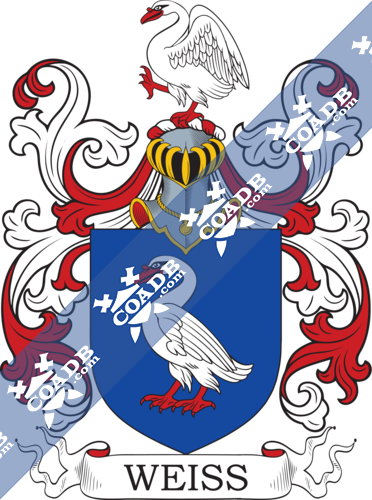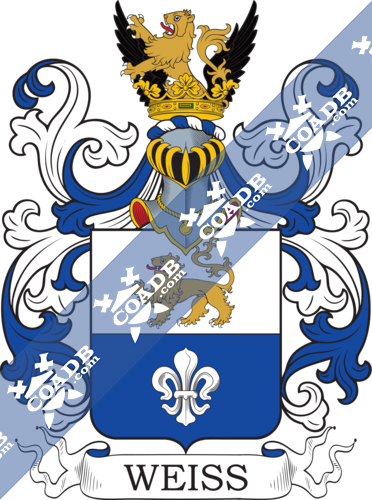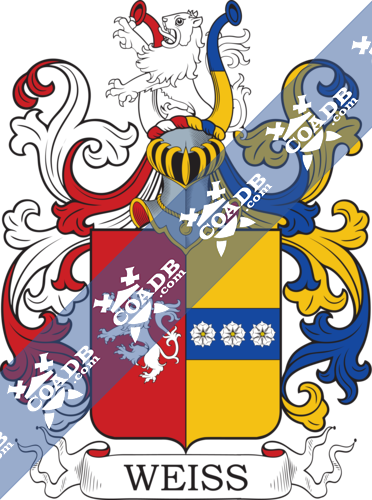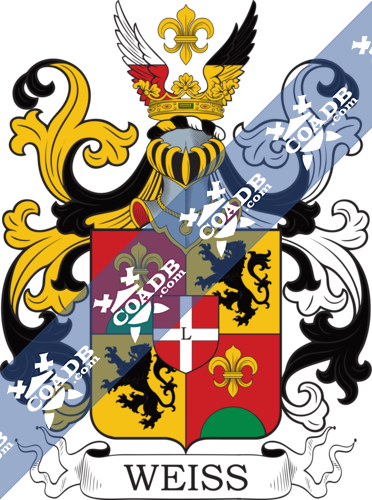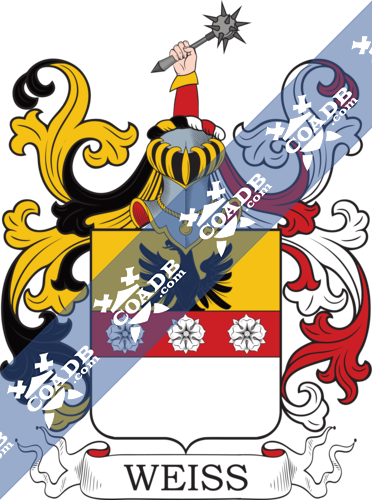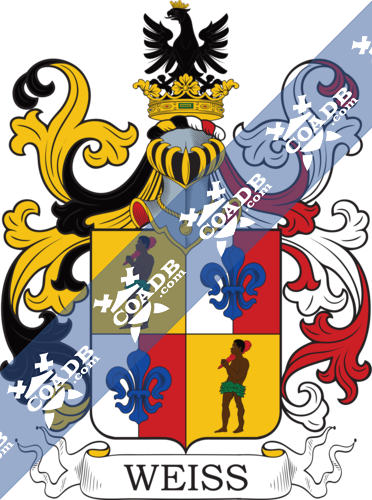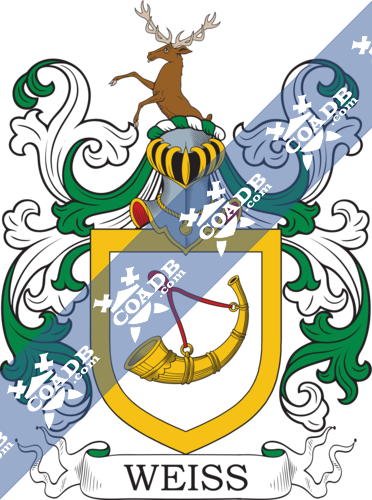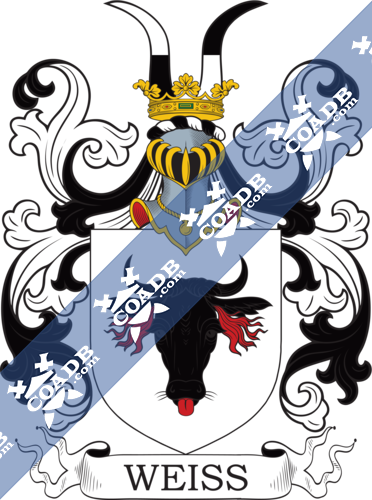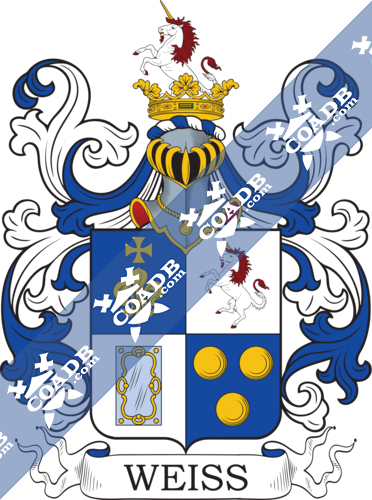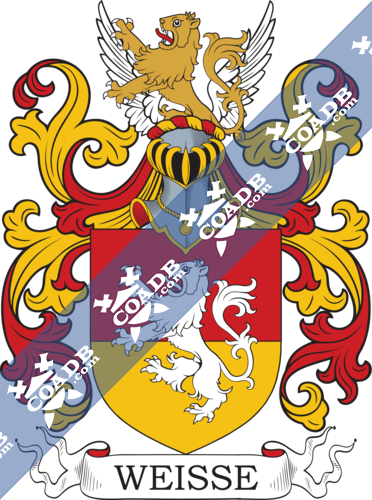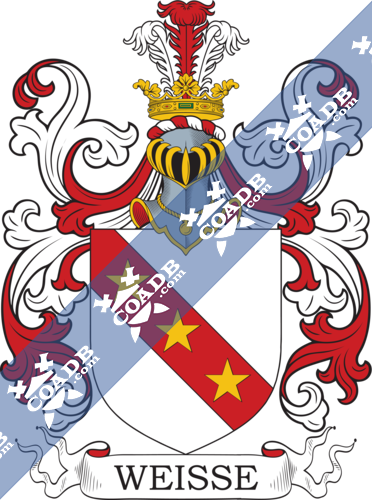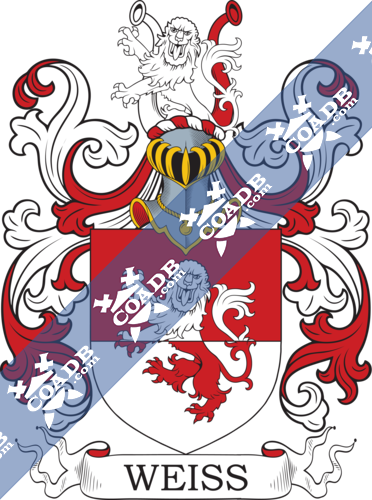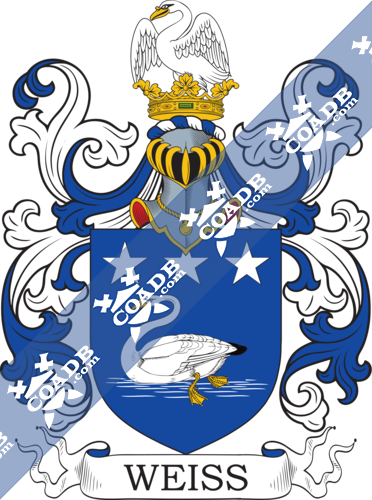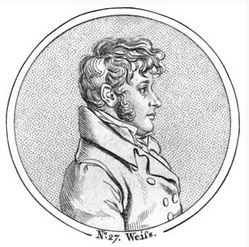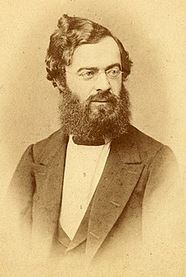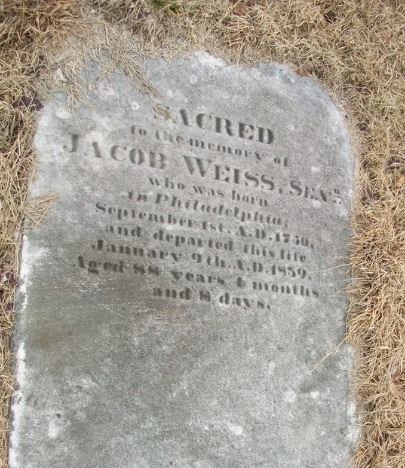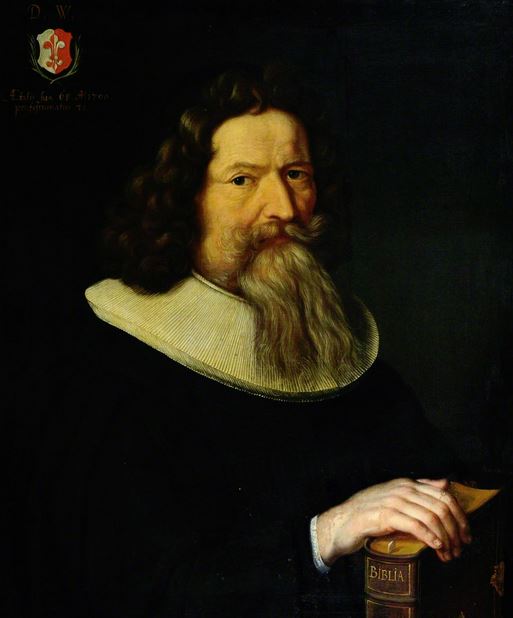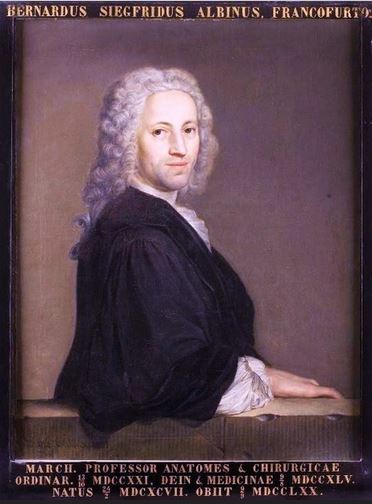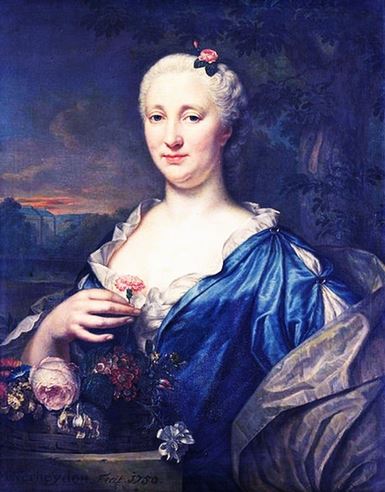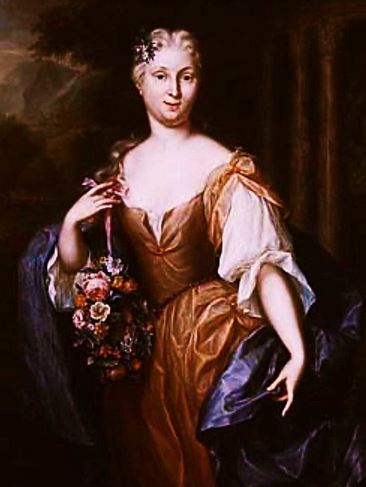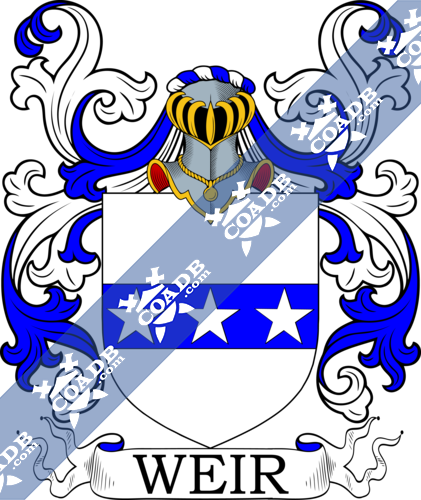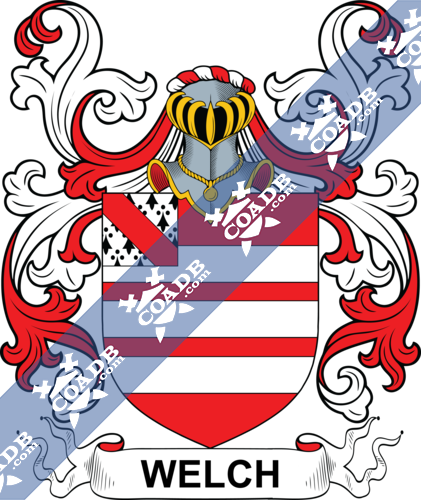Weiss Family Crest, Coat of Arms and Name History
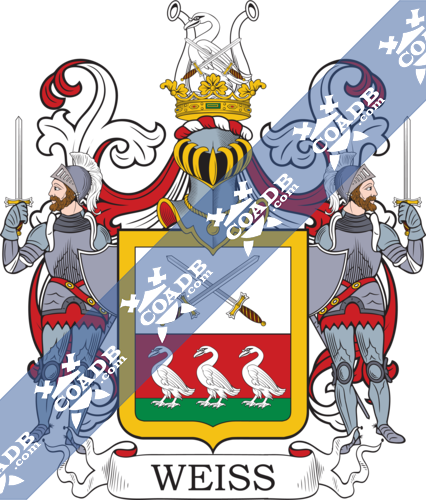
Weiss Coat of Arms Gallery
Don’t know which Coat of Arms is yours?
We can do a genealogical research. Find out the exact history of your family!
Learn MoreThe popular German surname Weiss (or Weis, Weisse, Weitz, Wyss) developed as nickname for a person with white hair or an exceptionally fair/pale complexion, from the German word weiss or Middle High German word wiz, both meaning white (or blonde). It also may be derived from the Old High German word wis, meaning wise, experienced, or clever.
It’s theorized the name may have referend to Scandinavian or Viking people who came from the present-day countries of Denmark, Sweden, and Norway. An alternate theory is that it may have referred to a middle-aged person with grey-hair, a rarity, as most people did not live that long during medieval times and the Middle Ages. One source asserts the name was first established in Saxony.
It also may be a habitational last name denoting a person who came from various places in central Europe named Weiss or Weissen. Further, it may have developed as a reduced/shortened form of an old Germanic personal (first) name comprised of the words wig (battle) or widu (wood). In some cases, it is also Ashkenazi Jewish. It should also be noted the name serves as prefix to numerous German last names such as Weissbaum, Weissburg, Weissbecher, etc.
The name is ranks high in several nations: Germany (50th), Israel (17th), Austria (31st), Switzerland (68th), and the United States (459th). In the United States, it is particularly common in the following states: New York, New Jersey, Wisconsin, Pennsylvania, Illinois, and Minnesota.
Early bearers include Ricardus Weisse who was documented in the Charters of Illesheim in 1332 and Claus Wisemann who was recorded in Strasburg in 1333 AD.
Early bearers who emigrated to colonial America include George Weiss (1709), Johannes Weiss (New York 1710), George Michael Weiss (Pennsylvania 1727), and Hans Adam Weiss (1731).
Some notables of this name include: Carl Weiss (an American doctor from Baton Rouge, Louisiana who supposedly assassinated U.S. Senator Huey Long in 1935), Edmund Weiss (an Austrian astronomer known for his work on comets), Elizabeth Weiss (the lead singer of the American music group The Shangri-Las), and Ehrich Weiss (the famous magician and illusionist Harry Houdini).
A one Wolfgang Weiss was born in Austria prior to 1505 AD. He married a woman named Apollonia and had a son with her named Pastor Pantaleon Candidus, who was one of 14 children. He married Sybille Kneupel and had a son with her named Samuel who was born in 1576 in Zwebruecken, Bavaria in 1576.
A one Johannes Weiss was born around 1611 and was of Czech descent. In 1682, he married Anna Maria Follebaltin in Rudolfstadt, Germany and had the following issue with her: Melchoir, Maria, Regina, Appolonia, Georgius, Clara, Anna, Michael, and Eva. His son Gerorgius was born in 1652 and he later married Eva Kalschingerin and had the following issue with her: Ursula, Ferdinanus, Mathias, Magthalena, Sophia, Rudolphus, Susanna, and Elisabeth. His son Ferdinandus was born in 1681 in the Kingdom of Bohemia and he married Maria Magdalena Honitzerin, with whom he had three children: Jacobus, Martinus, and Maria Veronica. His son Martinus was born in 1710 and he married Thersia Wimmerin, with whom he had the following issue: Maria Rosina, Josephus Mathias, Joannes Antonius, Magdalena Weysin, Maria Rosalia, and Adalberus.
Hans Jacob Weiss was born in Baden, Germany in around 1685. He came to colonial America aboard the Albany in 1728, arriving in Philadelphia, Pennsylvania. He married Barbara Wolffin and had the following issue with her: Maria Barbara, Hans Jacob, Maria Catharina (Kitch), Maria Barbara, Ottilia, Maria Elisabeth, Hans Martin, Elisabetha, Georg, and Susanna.
John Weiss or Wise was born in Germany in 1833. He came to the United States and died in Saratoga, New York in 1905, having had the following children: Margaret, Charles, Nathan, Dora, Frank, George, Julia, John, Samuel, Ann, and Lattie.
Blazons & Genealogy Notes
1) Prusse – (An., 16 oct. 1789) – Coupé au 1 d’argent à deux épées au naturel passées en sautoir au 2 de gueules à trois cygnes d’argent rangés sur une terrasse de sinople L’écu bordé d’or Casque couronné Cimier un cygne d’argent surmonté des épées entre deux proboscides d’argent Lambrequin d’argent et de gueules Tenants à dextre un homme d’armes tenant une épée haute
2) Prusse – (An., 21 janv. 1790) – Coupé au 1 d’argent au lion léopardé au naturel au 2 d’azur à une fleur-de-lis d’argent Casque couronné Cimier le lion issant entre un vol de l’aigle de Prusse Lambrequin d’argent et d’azur. English: Per fess 1st argent a lion passant proper 2nd azure with a fleur de lys argent Crowned with a helmet Crest: the lion issuant between a pair of wings of an eagle of Prussia Mantling: argent and azure.
3) Prov. rhénanes – Coupé de gueules sur or au lion d’argent brochant sur le coupé Cimier le lion issant entre un vol banneret rayé d’or de gueules et d’argent Lambrequin d’or et de gueules. English: Per fess gules over or a lion argent covering over the partition Crest: the lion issuant between a pair of wings small flag striped or and gules and argent Mantling: or and gules.
4) Lorraine – (An., 6 fév. 1601) – Coupé d’or sur gueules au lion d’argent brochant sur le tout. English: Per fess or over gules a lion argent covering overall.
5) Coupé de gueules sur argent au léopard lionné de l’un en l’autre Cimier un léopard issant d’argent entre deux proboscides d’argent et de gueules. English: Per fess gules over argent a lion rampant guardant counterchanged Crest: a lion passant guardant issuant argent between two proboscides argent and gules.
6) Winterthür – – Écartelé aux 1 et 4 de sable à une fleur-de-lis d’or aux 2 et 3 d’azur à une étoile d’or Cimier la fleur-de-lis Lambrequin à dextre d’or et de sable à senestre d’or et d’azur. English: Quarterly 1st and 4
7) Saxe – (Nob. du St-Empire, 31 juillet 1790) – D’azur à un cygne au naturel nageant dans une eau et acc de trois étoiles d’argent rangées en chef Casque couronné Cimier un cygne d’argent le vol étendu Lambrequin d’argent et d’azur. English: Azure with a swan proper naiant [swimming] in a river and accompanied by three etoiles argent arranged in chief Crowned with a helmet Crest: a swan argent the pair of wings extended Mantling: argent and azure.
8) Reichartshofen (Bavière) – Coupé d’azur sur or à un griffon de l’un en l’autre Cimier un griffon issant d’or. English: Per fess azure over or with a griffin counterchanged Crest: a griffin issuant or.
9) Saxe – (An., 2 avril 1836) – D’or à un bouquetin naissant de sable accorné d’argent Casque couronné Cimier le bouquetin issant. English: Or with an ibex naissant sable horned argent Crowned with a helmet Crest: the ibex issuant.
10) Livonie – (Nob. du St-Empire, 17…) – D’argent à deux fasces d’azur Casque couronné Cimier un bras armé d’argent brandissant une épée du même garnie d’or. English: Argent two bars azure Crowned with a helmet Crest: an arm armoured argent brandishing a sword of the same hilt and pommell or.
11) Autriche – Écartelé aux 1 et 4 d’argent au lion de gueules aux 2 et 3 de qui est de gueules à un homme armé d’argent tenant une lance du même Cimier l’homme armé entre un vol de gueules et d’argent. English: Quarterly 1st and 4th argent a lion gules 2nd and 3rd gules with a man armoured argent holding a lance of the same Crest: the man armoured between a pair of wings gules and argent.
12) Autriche – Écartelé aux 1 et 4 d’argent au lion de gueules couronné d’or aux 2 et 3 bandé d’or et de sable de quatre pièces. English: Quarterly 1st and 4th argent a lion gules crowned or 2nd and 3rd bendy or and sable of four pieces.
13) Augsbourg – (An., 21 oct. 1837) – Écartelé aux 1 et 4 d’argent à trois boules de sable aux 2 et 3 de gueules au lion d’or celui du 3 contourné Casque couronné Cimier le lion du 2 issant entre un vol d’argent chaque aile ch de trois boules de sable rangées en pal Lambrequin à dextre d’argent et de sable à senestre d’or et de gueules. English: Quarterly 1st and 4th argent three balls sable 2nd and 3rd gules a lion or that of the 3rd reversed Crowned with a helmet Crest: the lion of the 2nd issuant between a pair of wings argent each wing charged with three balls sable arranged palewise Mantling: to the dexter argent and sable to the sinister or and gules.
14) Ansbach (Bavière) – (Conc. d’arm., 1643) – D’or à trois roses de gueules Cimier un vol aux armes de l’écu. English: Or three roses gules Crest: a pair of wings with the arms of of the shield.
15) Augsbourg – De gueules à un sphinx d’or arrêté sur une terrasse de sinople couronné d’or ayant des ailes de dragon de sinople Cimier le sphinx issant Lambrequin d’or et de gueules. English: Gules with a sphinx or statant on a mount vert crowned or having the wings of dragon vert Crest: the sphinx issuant Mantling: or and gules.
16) Courlande – D’azur à un cygne d’argent becqué et membré de gueules Cimier le cygne le vol et la patte dextre levés Lambrequin d’argent et de gueules. English: Azure with a swan argent beaked and legged gules Crest: the swan the pair of wings and the paws dexter upright Mantling: argent and gules.
17) Esthonie – D’azur à un cerf rampant d’argent Casque couronné Cimier un chevalier issant armé de toutes pièces d’argent la visière baissée les mains appuyées sur les hanches. English: Azure with a stag rampant argent Crowned with a helmet Crest: a knight issuant fully armoured argent the visor lowered the hand resting on the hip.
18) Berne – Cachet de 1729 – D’azur à une rivière ondée en bande côtoyée de deux feuilles les tiges en bas. English: Azure with a river undy bendwise surrounded by two leaves the stems downwards.
19) Baden (Argovie) – De sable à un jeune homme issant habillé d’argent la main dextre fourrée dans la poitrine de son habit la senestre appuyée sur sa hanche Cimier le meuble de l’écu. English: Sable with a young man issuant dressed argent the dexter hand stuffed in the folds of his habit the sinister resting on his hip Crest: the charge of the shield.
20) Bâle – Parti au 1 de gueules au lion d’argent au 2 d’or à la fasce d’azur ch de trois roses d’argent boutonnées d’or Cimier un lion issant d’argent entre deux proboscides coupées à dextre de gueules sur argent à senestre d’azur sur or Lambrequin conformes aux émaux des proboscides. English: Per pale 1st gules a lion argent 2nd or a fess azure charged with three roses argent budded or Crest: a lion issuant argent between two proboscides per fess to the dexter gules over argent to the sinister azure over or Mantling: conforming to the [same as] colours of proboscides.
21) Weiss de Häcklmühl – Bavière – Écartelé aux 1 et 4 de gueules à un tertre de sinople surmonté d’une fleur-de-lis d’or aux 2 et 3 d’or au lion de sable Sur le tout de gueules à la croix d’argent ch d’un L de sable Casque couronné Cimier une fleur-de-lis d’or entre un vol coupé à dextre d’argent sur gueules à senestre de sable sur or Lambrequin à dextre d’or et de sable à senestre d’argent et de sable (V Königsacker de Neuhaus). English: Quarterly 1st and 4th gules with a hillock vert surmounted by a fleur de lys or 2nd and 3rd or of lion sable on an escutcheon gules a cross argent charged with a L sable Crowned with a helmet Crest: a fleur de lys or between a pair of wings per fess to the dexter argent over gules to the sinister sable over or Mantling: to the dexter or and sable to the sinister argent and sable.
22) Weiss de Königsacker – Bavière – (Nob. du St-Empire, 7 mars 1664; nob. bavaroise, 15 sept. 1665. M. ét.) – Coupé d’or sur argent à la fasce de gueules ch de trois roses d’argent et brochant sur le coupé l’or chargé d’une aigle issante de sable mouv de la fasce Cimier un avant-bras en pal paré de gueules rebrassé d’or la main de carnation brandissant une massue au naturel Lambrequin d’or de sable d’argent et de gueules. English: Per fess or over argent a fess gules charged with three roses argent and covering over the partition the or charged with a eagle issuant from sable coming from the fess Crest: a fore-arms palewise clothed [dressed] gules turned back [of cuffs etc.] or the hand carnation brandishing a mace proper Mantling: or sable argent and gules.
23) Weiss de Limburg – Francfort-s/Main – Écartelé aux 1 et 4 d’or à un More passant posé de profil tenant de ses deux mains une massue de gueules posée sur son épaule dextre aux 2 et 3 parti d’argent et de gueules à une fleur-de-lis d’azur brochant sur le parti Casque couronné Cimier une aigle de sable couronnée d’or. English: Quarterly 1st and 4th or with a Moor passant placed in profile holding in his two hands a mace gules placed over his shoulder dexter 2nd and 3rd per pale argent and gules with a fleur de lys azure covering over the per pale Crowned with a helmet Crest: an eagle sable crowned or.
24) Weiss de Sternsee – Styrie – (Nob. du St-Empire, 14 août 1598) – D’argent à un cor de chasse d’or lié de gueules posé en barre l’écu bordé du second Cimier un cerf issant au naturel Lambrequin d’argent et de sinople. English: Argent with a hunting horn or tied [banded] gules placed bendwise sinister the shield fimbriated of the second Crest: a stag issuant proper Mantling: argent and vert.
25) Weiss de Weiss – Prusse – (Ren. de nob., 22 sept. 1706) – D’argent à un rencontre de buffle de sable langué de gueules jetant des flammes par les oreilles Casque couronné Cimier deux cornes de buffle coupées alternativement d’argent et de sable. English: Argent with an head affronty of an ox [with ring in nostrils] sable langued gules jets of flame coming from the ears Crowned with a helmet Crest: two buffalo horns per fess alternately argent and sable.
26) Weiss de Weissenbach – Autriche, Saxe – (Chevaliers du St-Empire, 20 mars 1506 et 10 mars 1510; conf. du titre de baron, 28 fév. 1853) – D’azur à deux lis au naturel les tiges passées en sautoir posées sur un tertre de sinople. English: Azure two natural lilies proper the stems placed saltirewise placed on a hillock vert.
27) Weiss de Weissenfels – Prusse – (An., 1648) – Écartelé aux 1 et 4 fascé d’azur et de sable de quatre pièces au lion d’or couronné du même brochant sur le tout celui du 1 contourné aux 2 et 3 d’or à la demi-aigle de sable mouv du parti Sur le tout de gueules à un homme armé d’argent tenant une lance du même Deux casques couronnés Cimier deux cimiers identiques savoir un lion issant d’or couronné du même tenant un sabre le lion du 1er cimier contourné Lambrequin à dextre d’argent et de gueules à senestre d’or et d’azur. English: Quarterly 1st and 4th barry azure and sable of four pieces a lion or crowned of the same covering overall that of the 1st reversed 2nd and 3rd or with a demi eagle sable coming from the partition [pale] on an escutcheon gules with a man armoured argent holding a lance of the same Crowned with two helmets Crest: two Crests: identical, being a lion issuant or crowned of the same holding a sabre the lion of 1st Crest: reversed Mantling: to the dexter argent and gules to the sinister or and azure.
28) Weiss de Weissenlöw – Saxe – Écartelé au 1 d’azur à une fleur-de-lis d’or surmontée d’une croisette pattée du même au 2 d’argent à une licorne rampante au naturel au 3 d’argent à un miroir carré au naturel encadré d’or au 4 d’azur à trois besants d’or Casque couronné Cimier la licorne saillante Lambrequin d’argent et d’azur. English: Quarterly 1st azure with a fleur de lys or surmounted by a crosslet pattee of the same 2nd argent with a unicorn rampant proper 3rd argent with an square mirror proper decorated or 4th azure three bezants or Crowned with a helmet Crest: the unicorn saillant [leaping forward] Mantling: argent and azure.
29) Bavière, Prov. rhénanes – (Conf. de nob., 12 avril 1815) – Coupé de gueules sur or au lion d’argent brochant sur le tout Cimier le lion entre un vol. English: Per fess gules over or a lion argent covering overall Crest: the lion between a pair of wings.
30) Weisse de Suzemont – Lorraine – D’argent à la bande de gueules ch de trois étoiles d’or Casque couronné Cimier trois plumes d’autruche une de gueules entre deux d’argent Lambrequin d’argent et de gueules. English: Argent a bend gules charged with three etoiles or Crowned with a helmet Crest: three ostrich feathers a gules between two argent Mantling: argent and gules.

